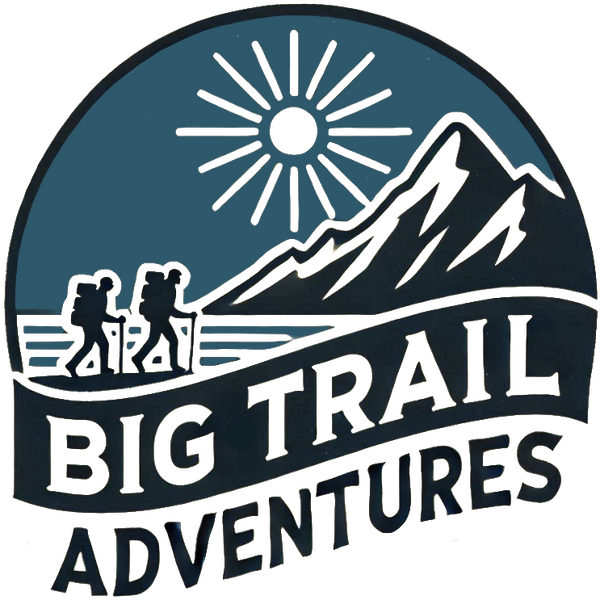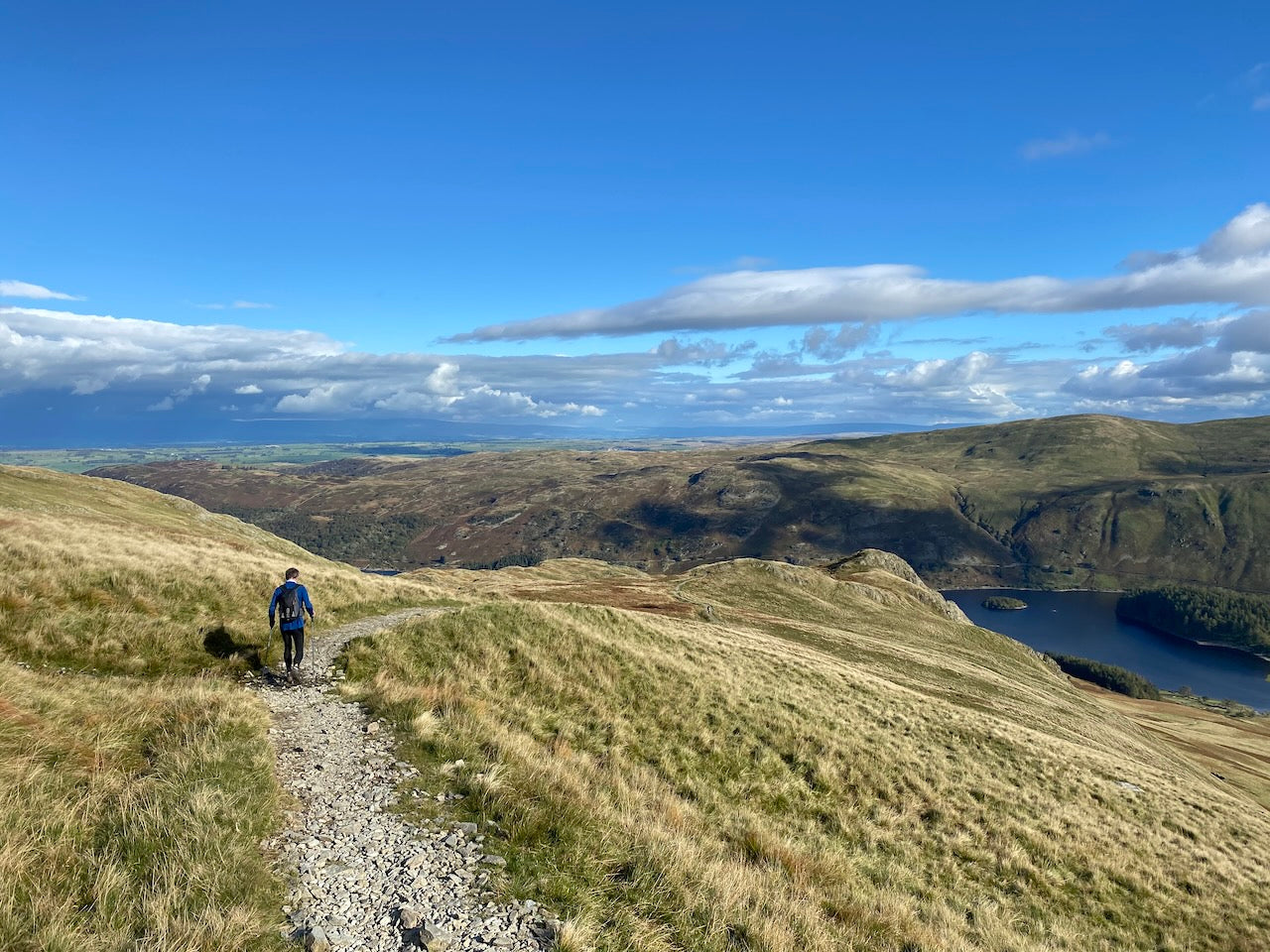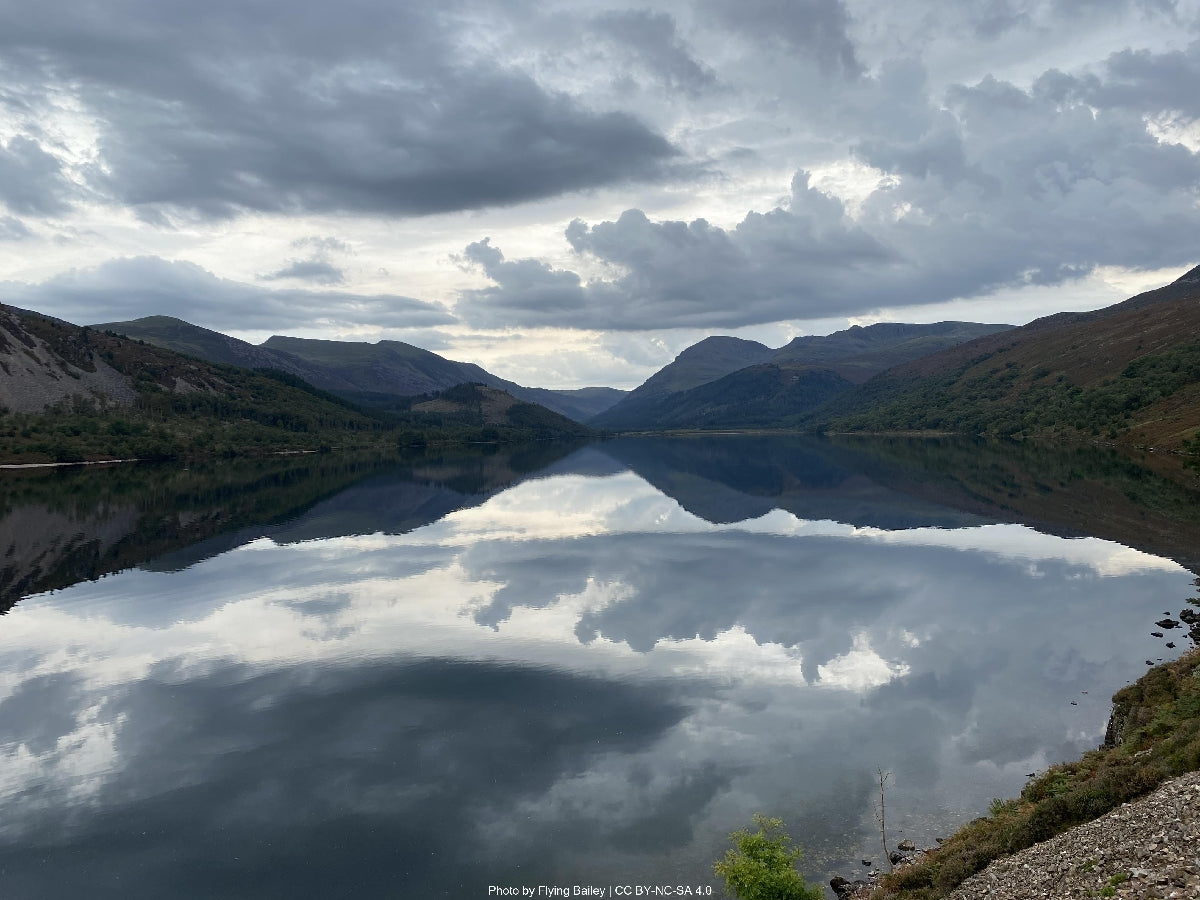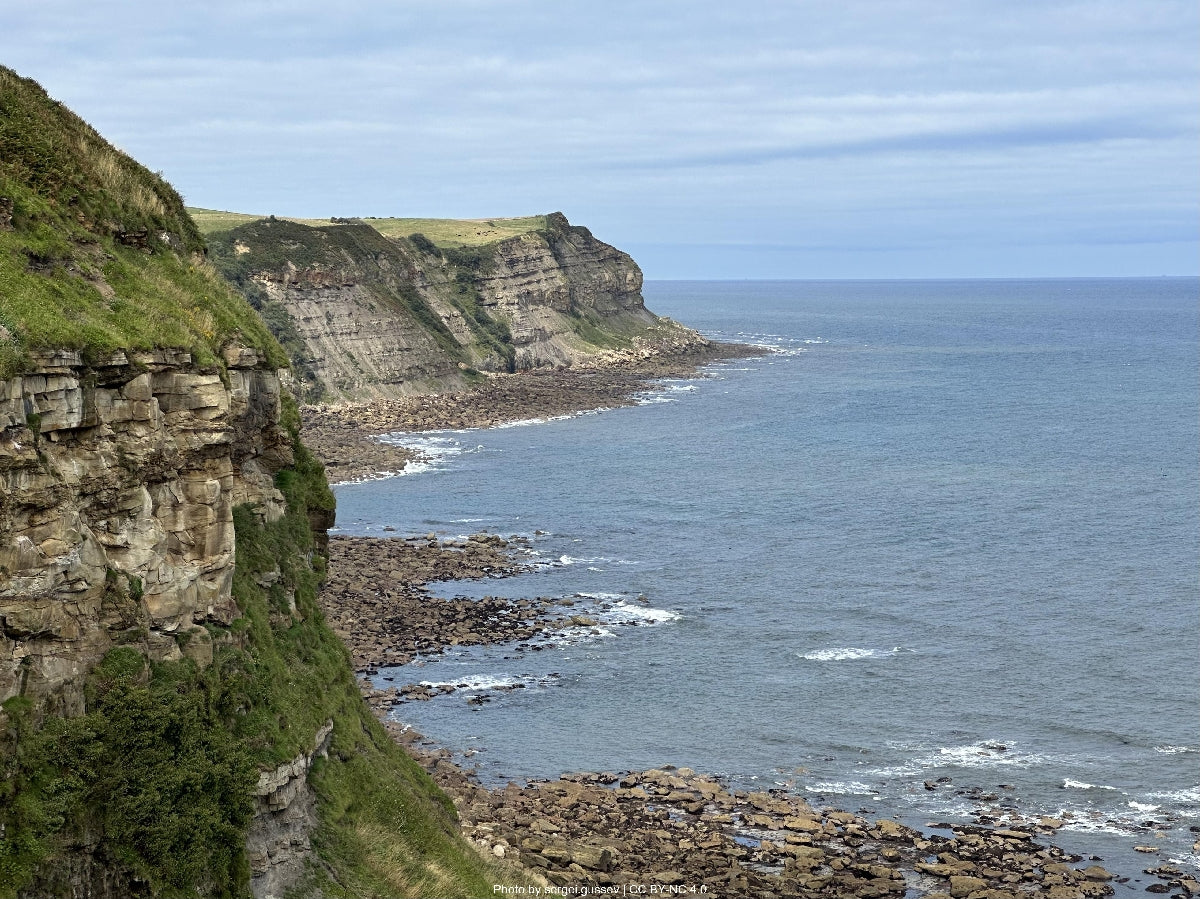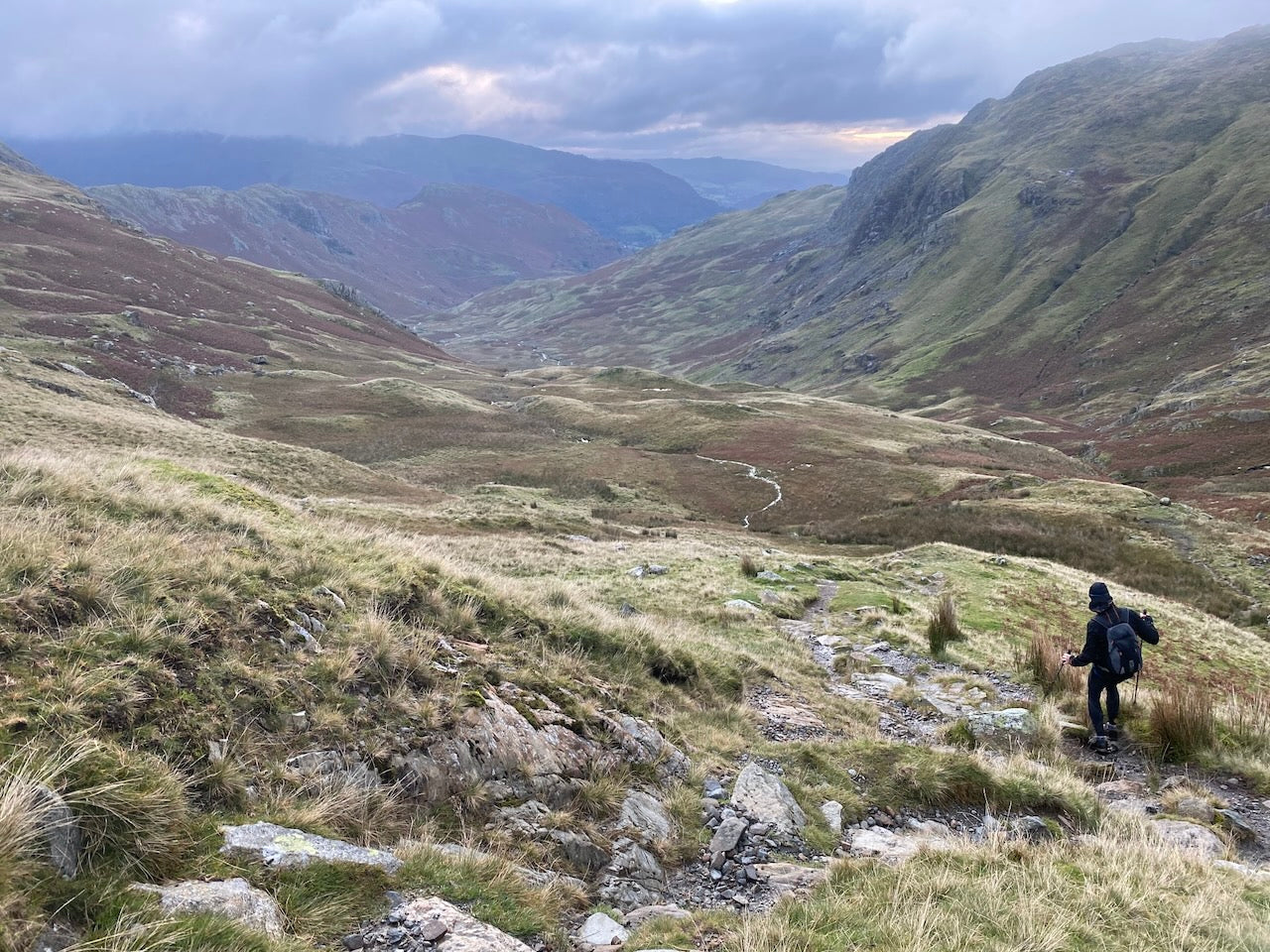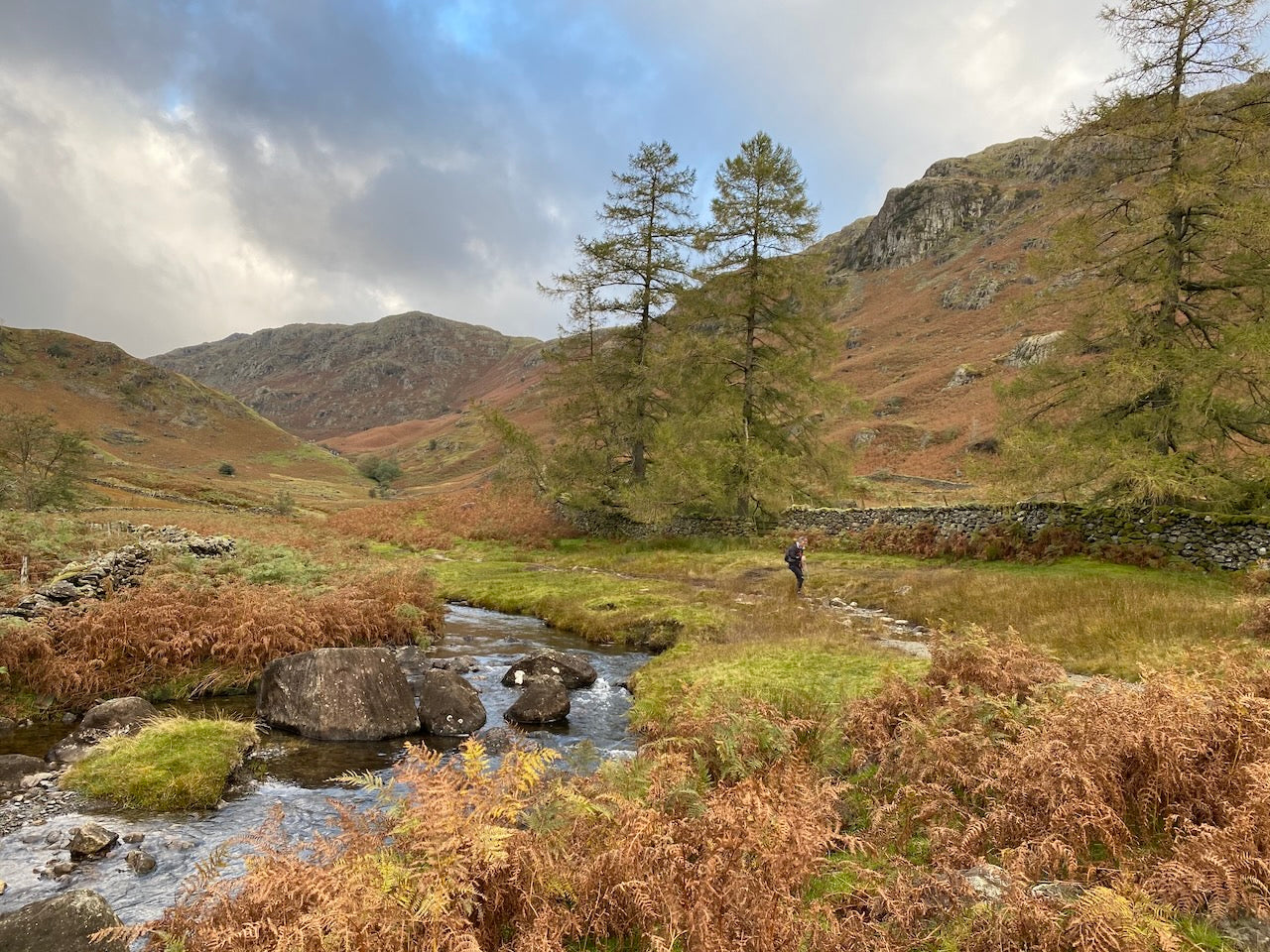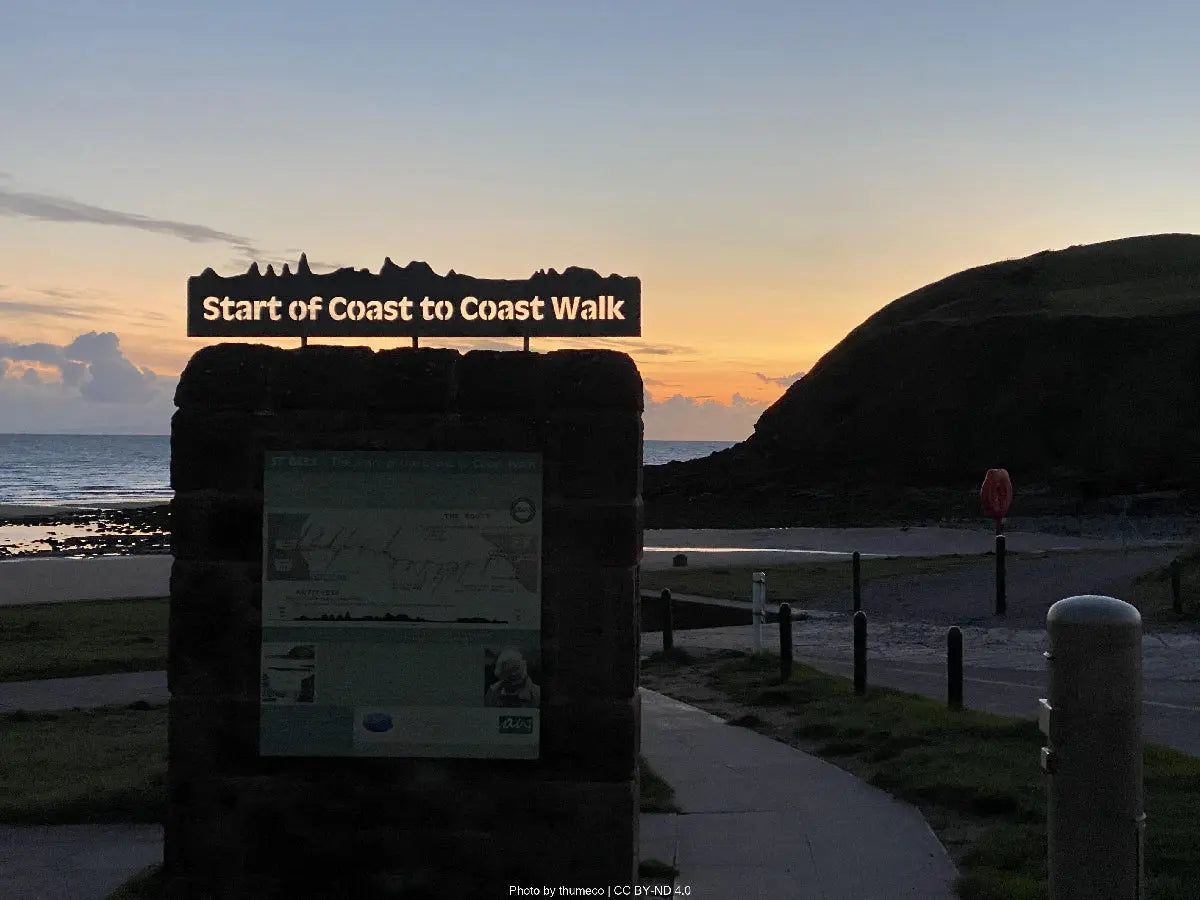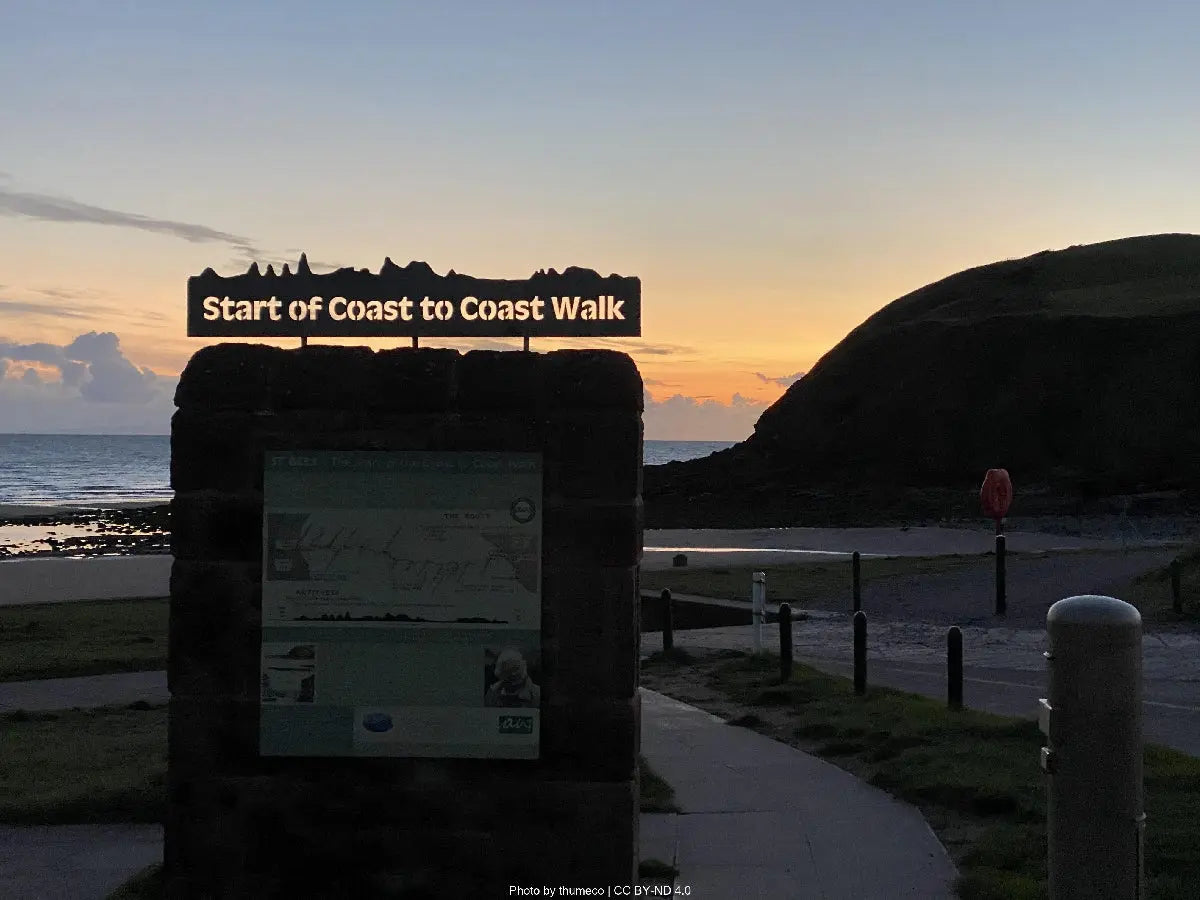Coast to Coast Walk Overview
- Diverse landscapes across northern England
- Cultural immersion in traditional villages
- Achievable challenge with excellent infrastructure
The Coast to Coast Walk stands as one of Britain's most beloved long-distance footpaths, stretching 309 kilometers (192 miles) across the width of northern England. Conceived by legendary fell walker Alfred Wainwright in 1973, this unofficial yet immensely popular route traverses three distinct national parks: the Lake District, Yorkshire Dales, and North York Moors. Beginning at the Irish Sea and concluding at the North Sea, trekkers experience the dramatic terrain shift from rugged Lakeland... Read more
| Hilliness | |
| Start Point | St Bees, Cumbria (Western coastline of England) |
| End Point | Robin Hood's Bay, North Yorkshire (Eastern coastline of England) |
| Activity Type | Walking, Hiking, Trail Running |
| Distance | 309km | 192 miles |
| Ascent | 6,000m | 19,700ft |
| When to go | May through September |
| Baggage Transfer | Available |
From £1,248.00
Based on a Standard Package for two people.
Build Your Adventure
Not ready to book?
Call us on 0131 560 2740
or enquire by email
What's included?
-
Custom Adventure Plan
-
Accommodation options for you
-
Door‑to‑door GPX in our app
-
On‑trail support
-
Share with up to four people
Sample Itinerary
Here's what's on the trail. We'll split the stages to each day just right for your pace.
Key Features: Irish Sea coastline, St Bees Head, Dent Fell, Cleator Moor
The journey begins with a traditional toe-dipping in the Irish Sea and collection of a pebble at St Bees beach. The trail initially follows dramatic red sandstone cliffs at St Bees Head, offering excellent views across Solway Firth to Scotland on clear days. After passing the lighthouse, the route turns inland through farmland toward Sandwith and Moor Row. The first significant climb takes you up Dent Fell (353m), providing your first panoramic views of the Lake District fells ahead. The descent through Nannycatch Gate and Beck offers peaceful woodland walking before arriving at Ennerdale Bridge, a small village with limited but adequate amenities including the Fox & Hounds and Shepherd's Arms pubs. Water sources are plentiful throughout this stage, with streams in the latter half. This introductory stage gives walkers a taste of coastal and inland terrain while offering relatively gentle gradients compared to what lies ahead.
Key Features: Ennerdale Water, Black Sail Pass, Loft Beck, Borrowdale Valley
This stage provides your first true immersion into Lake District wilderness. From Ennerdale Bridge, follow the southern shore of Ennerdale Water, a remote glacial lake surrounded by dramatic fells. The path continues along the valley floor, following the River Liza through conifer plantations and native woodlands. After passing the isolated Black Sail Youth Hostel (a potential overnight stop for those splitting this stage), you'll tackle the first serious ascent up Black Sail Pass (546m). The climb up Loft Beck demands careful footing on a steep, sometimes loose path. Once at the top, spectacular views of Great Gable and Buttermere open up. The descent brings you through the old slate mining areas of Honister Pass, where the Honister Slate Mine visitor center offers refreshments. The final stretch follows the Borrowdale Valley through typical Lakeland pastures to Rosthwaite, a quintessential Lake District village with several accommodation options. Water is abundant throughout, but be aware that the high fells can be exposed in poor weather.
Key Features: Greenup Edge, Far Easedale, Helm Crag (optional)
Though shorter in distance, this stage includes significant ascent and potentially challenging navigation in poor visibility. From Rosthwaite, the trail climbs steadily through Stonethwaite Valley alongside Greenup Gill. The ascent steepens as you approach Lining Crag before reaching the high point at Greenup Edge (613m). In clear weather, the views back to Borrowdale and ahead to Thirlmere are magnificent. The standard route descends via Far Easedale – a gentler option with beautiful valley views. Alternatively, experienced walkers might take the high route over Calf Crag, Gibson Knott, and Helm Crag (known as "The Lion and the Lamb" for its distinctive rock formation). Either route leads to Grasmere, one of the Lake District's most charming villages with numerous cafés, restaurants, and accommodation options. Wordsworth's Dove Cottage and Grasmere Gingerbread shop are popular cultural attractions. Water sources are reliable up to Greenup Edge, after which Far Easedale Gill provides clean water options through the descent.
Key Features: Grisedale Pass, Grisedale Tarn, Brothers Water view
Despite being the shortest stage, this section includes substantial climbing and varying route options. From Grasmere, take the path past the Youth Hostel and begin climbing toward Great Tongue. The ascent continues steadily to Grisedale Tarn (538m), a stunning mountain lake nestled between Fairfield and Seat Sandal. Here, adventurous walkers have three options: the main route continues directly down Grisedale Valley; a high-level alternative climbs St Sunday Crag (841m); or the challenging route ascends Helvellyn (950m), England's third-highest peak. The main valley route provides the easiest passage, following Grisedale Beck down beautiful Grisedale Valley with views of the imposing eastern face of Fairfield. Reaching Patterdale and neighboring Glenridding offers access to Ullswater Lake. These twin villages provide good services, including a well-stocked store, hotels, and guesthouses. The area around Brotherswater on the approach offers excellent photographs of classic Lakeland scenery. Reliable water sources are available throughout, with Grisedale Beck following most of the descent route.
Key Features: Angle Tarn, Kidsty Pike, Haweswater Reservoir
This challenging stage marks the final – and highest – section of the Lake District, crossing the eastern fells before descending into the limestone landscape of Cumbria's Eden Valley. Leaving Patterdale, a sustained climb leads past beautiful Angle Tarn to The Knott and then onto Kidsty Pike (780m), the highest point of the entire Coast to Coast route. The descent to Haweswater Reservoir requires careful navigation on steep terrain. The path then follows the reservoir shoreline for approximately 6km, an occasionally undulating and rocky section with glimpses of golden eagles that nest in the area. After Burnbanks, the landscape transitions dramatically from Lakeland fells to the gentler terrain of the Eden Valley. The final approach to Shap passes prehistoric Kemp Howe stone circle and the imposing ruins of Shap Abbey before reaching the village itself, which stretches along the A6 road. Shap offers several accommodation options, a supermarket, and pubs. Water sources are plentiful until after Burnbanks, where streams become less frequent across the limestone terrain.
Key Features: Limestone pavement, Orton village, Smardale Bridge
This lengthy but less strenuous stage transitions fully from Lakeland terrain to the Yorkshire Dales landscape. From Shap, the route crosses the M6 motorway and railway line before traversing limestone uplands characterized by expansive scenery and limestone pavements. The pretty village of Orton makes an excellent refreshment stop, known for its chocolate factory and monthly farmers' market. Beyond Orton, the route crosses Crosby Ravensworth Fell and Ravenstonedale Moor, offering vast horizons and a sense of solitude rare on the earlier stages. The scenery becomes increasingly pastoral as you descend toward Smardale Bridge, a beautiful ancient structure spanning Scandal Beck. The final approach to Kirkby Stephen passes through meadows and farmland. Kirkby Stephen itself is the largest settlement since St Bees, offering all services including banks, outdoor shops, supermarkets, and a range of accommodation. Water sources become more intermittent across this limestone terrain – carry sufficient supply between settlements. This stage showcases how the geology underpinning the landscape transforms the character of the walking experience.
Key Features: Nine Standards Rigg, Swaledale Valley entrance
This pivotal stage crosses the Pennine watershed from Cumbria into Yorkshire, marking the halfway point of the journey. From Kirkby Stephen, a steady climb leads to the iconic Nine Standards Rigg (662m), a mysterious arrangement of tall stone cairns whose origins remain uncertain. From this exposed summit, three alternative routes (red, blue, or green) descend toward Ravenseat based on seasonal conditions to minimize erosion of the fragile moorland. This high moorland crossing can be boggy and challenging in poor visibility. The route gradually descends into upper Swaledale, one of Yorkshire's most beautiful dales, following the infant River Swale. The tiny settlement of Keld, once a lead mining center, offers limited accommodation options that require advance booking. The landscape transforms dramatically from the expansive moorland to the intimate, green valley setting. Water sources on the high moor can be unreliable and potentially contaminated by peat – carry sufficient supply from Kirkby Stephen until descending to clearer streams in upper Swaledale. The transition into Yorkshire Dales National Park brings distinctive field patterns enclosed by dry stone walls.
Key Features: Lead mining remains, Swaledale meadows, Gunnerside Gill
This stage offers two distinct route options showcasing different aspects of Swaledale heritage: the high route traverses the northern valley slopes through fascinating industrial archaeology of the lead mining industry, while the low route follows the valley floor through lush haymeadows and charming villages. The high route climbs from Keld to Old Gang Smelting Mills and Surrender Bridge, passing abandoned mine shafts, processing buildings, and spoil heaps that tell the story of this area's industrial past. The low route stays alongside the Swale River, passing through Muker village with its craft shops and tea room, then through traditional flower-rich haymeadows protected as conservation areas. Both routes converge at Reeth, a vibrant village arranged around a triangular green with several pubs, cafés, and accommodation options. Reeth also houses the Swaledale Museum documenting local history. Water sources are generally reliable on both routes, with the valley route offering more frequent access to villages. This stage provides an opportunity to understand how human activity has shaped the landscape over centuries.
Key Features: Richmond Castle, River Swale, Applegarth Scar
This relatively gentle stage follows lower Swaledale to Richmond, the largest town on the route. From Reeth, the path traverses farmland and woodland above the River Swale, offering occasional elevated views across the valley. Points of interest include Marrick Priory (a former Benedictine nunnery now outdoor education center), the hamlet of Marske with its 12th-century church, and limestone outcrops at Applegarth Scar. The approach to Richmond is particularly dramatic as the massive Norman keep of Richmond Castle comes into view. Richmond itself represents a significant milestone, with its cobbled marketplace, Georgian architecture, and full range of urban amenities including numerous accommodation options, restaurants, and shops ideal for resupplying. The town's history is palpable in the narrow wynds (alleys) climbing from the river, the restored Georgian Theater Royal, and impressive castle complex. Water sources are reliable throughout this stage with frequent access to streams and the river. This stage offers a welcome touch of civilization approximately two-thirds through the journey.
Key Features: Vale of Mowbray crossing, transition landscape
The longest stage of the route crosses the flat agricultural Vale of Mowbray, representing a necessary transitional section between the Yorkshire Dales and North York Moors. Leaving Richmond, the path follows the River Swale briefly before striking out across the predominantly flat farmland. This stage passes through numerous small villages including Catterick Bridge (with its racecourse), Danby Wiske (offering a crucial pub stop), and Bolton-on-Swale (with its church containing the tomb of Henry Jenkins, reputedly England's longest-lived man at 169 years). The terrain consists mainly of field paths, farm tracks, and minor roads, making for straightforward but potentially monotonous walking. The day ends at Ingleby Cross, a small village nestled at the foot of the Cleveland Hills marking the western boundary of the North York Moors. Accommodation options are limited here, centered around the Blue Bell Inn. Water sources become less frequent across this agricultural plain – carry sufficient supply between villages. While lacking the dramatic scenery of earlier and later stages, this crossing provides an important contrast in the journey and an opportunity to observe how geology influences landscape character, architecture, and farming practices.
How long will it take?
Everyone has a different approach to trails. Here are our suggested times for the Coast to Coast for different types of adventurers.
Here we have assumed that you will be out on the trail for around 8 hours per day, including regular breaks but not extended lunch stops.

16
Days
For walkers who love the journey as much as the destination.
You enjoy full days on the trail, moving steadily, soaking up the scenery — with plenty of time for food and drink stops along the way!

13
Days
For long-distance walkers who enjoy the challenge of a steady pace over varied terrain.
You’ve got the fitness to cover strong distances over several days — this is where most keen hikers will find themselves.

9
Days
The first of our faster categories — built for those who prioritise pace.
You move quickly with minimal stops, carry just the essentials, and have the fitness to handle long days and tough terrain.

6
Days
Our fastest pace – ideal for those used to ultramarathons.
You mix fast hiking with running on flats and descents, even over mountains. Speed and efficiency matter most, with minimal stops as you aim to complete each route as quickly as possible.
Build Your Adventure
Book by phone
Essential Travel Information
The Coast to Coast Walk is best undertaken between May and September when weather conditions are generally most favorable and daylight hours longest. Early May offers spectacular spring flowers in the dales, while late August showcases purple heather across the moors. July and August provide the most reliable weather but coincide with peak tourist season and school holidays.
Weather patterns vary significantly across the route's three national parks. The Lake District receives the highest rainfall (average 200+ days per year), while the North York Moors can experience extended dry periods but sudden heavy storms. Winter attempts are not recommended due to short daylight hours and potential snow cover on higher sections.
Seasonal hazards include:
- Spring: Lingering snow patches on high Lake District fells, river crossings after heavy rain
- Summer: Overcrowding in popular areas, limited accommodation availability
- Autumn: Decreasing daylight hours, increasing chance of mist and fog
- Winter: Snow and ice on high routes, potentially dangerous conditions
Most facilities operate fully from Easter through October, with limited operation during winter months. Some remote pubs and guesthouses close completely in winter or operate reduced hours.
The Coast to Coast offers varied accommodation options:
- B&Bs/Guesthouses: £70-120 per night (double room), most common option
- Hotels: £100-180 per night, available in larger settlements
- Hostels: £20-35 per night (dormitory bed), located in key points including Black Sail, Grasmere, Patterdale, Kirkby Stephen
- Bunkhouses: £25-40 per night, basic dormitory-style accommodation
- Camping: £8-15 per night at designated sites, wild camping permitted only in certain areas of Lake District with restrictions
Advance booking is essential during peak season (June-August), particularly in smaller settlements with limited options like Keld, Ingleby Cross, and Clay Bank Top (requiring transportation to accommodation). Book at least 3-6 months ahead for summer trips, especially for weekend dates.
Popular stopover points often include:
- Rosthwaite or Grasmere (splitting Lake District section)
- Patterdale (before the challenging Kidsty Pike stage)
- Kirkby Stephen (halfway point)
- Richmond (major resupply point)
- Ingleby Cross (before North York Moors)
The Coast to Coast route is accessible via public transportation at both terminuses and several mid-points:
Nearest major airports:
- Manchester International (3-4 hours to St Bees by train)
- Newcastle International (3 hours to St Bees by train)
- Leeds-Bradford (4 hours to St Bees by train/bus)
St Bees is accessible by train on the Cumbrian Coast Line from Carlisle or Lancaster. Robin Hood's Bay requires a bus connection from Scarborough or Whitby train stations.
Key public transportation hubs along the route:
- Richmond (bus connections to Darlington train station)
- Kirkby Stephen (on Leeds-Carlisle train line)
- Grosmont (North Yorkshire Moors Railway)
For emergencies or schedule adjustments, major bail-out points with transportation links include:
- Grasmere (bus to Windermere train station)
- Patterdale (bus to Penrith train station)
- Kirkby Stephen (direct train access)
- Richmond (bus to Darlington train station)
- Ingleby Cross (bus to Northallerton train station)
Many hikers use baggage transfer services (approximately £10-15 per bag per stage) to carry their main luggage between accommodation points, walking with just a daypack.
A comprehensive 14-day Coast to Coast trip budget estimate:
Accommodation costs (mid-range):
- B&B/guesthouse: £85-120 per night (£1,190-1,680 total)
- Mixed accommodation (some hostels): £60-100 per night (£840-1,400 total)
- Camping with occasional indoor stays: £30-50 per night (£420-700 total)
Transportation expenses:
- Return train fare to/from London: £120-200
- Local buses/taxis to accommodation off-route: £100-150
- Baggage transfer service (optional): £150-220
Food and supplies:
- Breakfast (usually included in accommodation): £0-10 per day
- Packed lunch: £5-10 per day (£70-140 total)
- Evening meal: £15-30 per day (£210-420 total)
- Snacks and drinks: £10-15 per day (£140-210 total)
Additional expenses:
- Guidebook and maps: £25-40
- Equipment purchases/rentals: varies significantly
- Emergency fund: £150-200 recommended
Total estimated budget range:
- Comfort option (B&Bs, baggage transfer, restaurant meals): £2,000-2,800
- Standard option (mixed accommodation, some baggage transfer): £1,500-2,200
- Budget option (mostly camping, carrying own pack): £800-1,300
The Coast to Coast ranks among Britain's most popular long-distance routes despite its unofficial status, with approximately 6,000 complete through-hikers annually and many more completing sections.
Peak season (mid-June through August) sees the highest traffic, with popular accommodation filling months in advance. May, early June, and September offer excellent alternatives with moderate traffic and good weather odds.
For maximum solitude, consider:
- Walking east to west (opposite to most hikers)
- Hiking mid-week rather than starting on weekends
- Visiting in April/early May or late September/October
- Taking alternative high routes in the Lake District
Cultural considerations include respecting local farming communities by following the Countryside Code, particularly regarding gates, livestock, and local facilities. Many small villages along the route depend on walker income while managing the impact of tourism.
Typical hiker demographics show a broad age range with particularly strong representation of retired walkers (60+) and those in the 40-55 age bracket. International walkers (particularly from Netherlands, Germany, USA, and Australia) comprise approximately 30% of through-hikers.
Social opportunities abound at overnight stops, with walkers typically gathering in local pubs to share experiences. Many form impromptu walking groups after meeting on early stages. The shared challenge creates a unique camaraderie, with traditional celebrations at the Bay Hotel bar in Robin Hood's Bay marking many completions.
